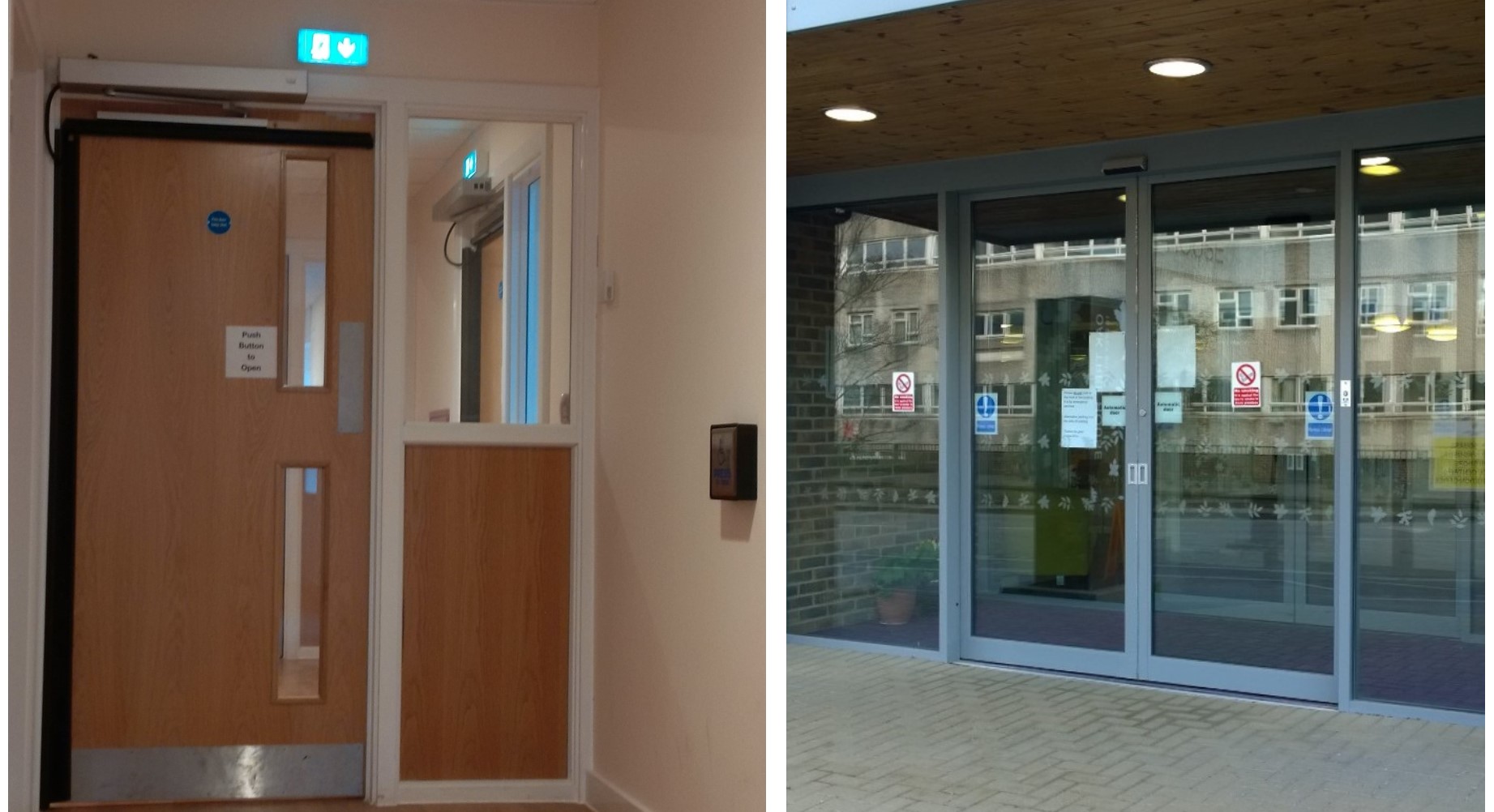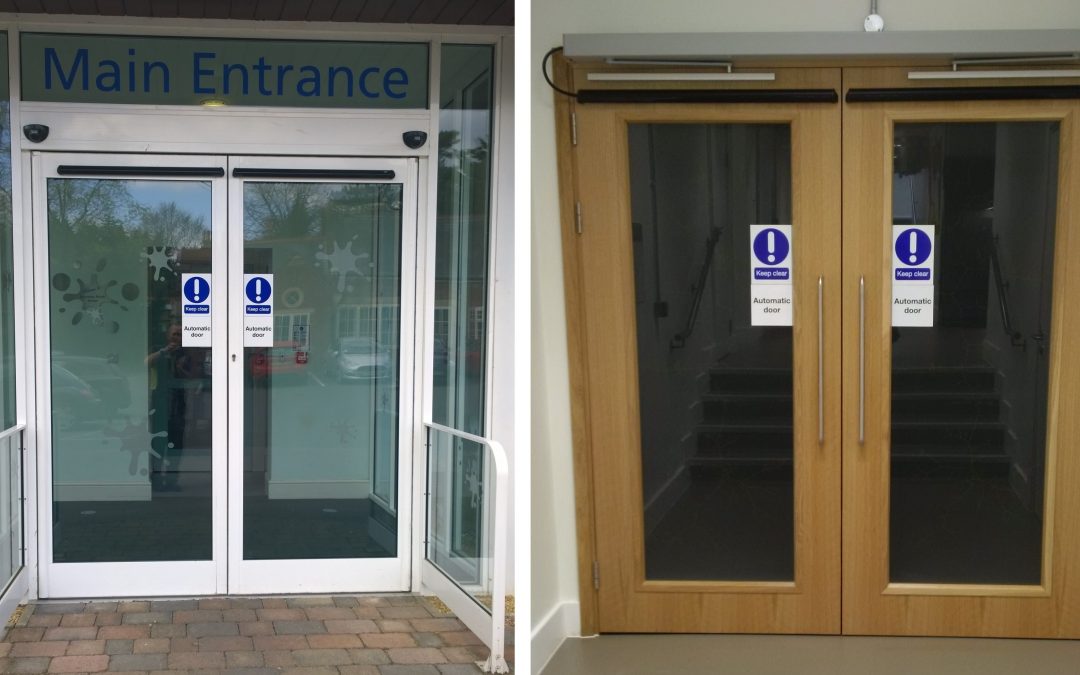Automatic doors are an ideal solution for both commercial and public sector buildings including shopping centres, hospitals, and offices that are likely to involve either a large number or variety of users (able bodied, disabled, young and old). It is important to ensure safe and easy access for all users. These automatic doors provide an efficient and convenient way for people to enter and exit these buildings. However, one important consideration for the safe operation of automatic doors is the need for occupier safety checks.
As a business owner, you have an obligation to your customers / visitors and your colleagues to ensure their safety whilst on the premises. This begins the moment they enter your property generally by an automatic door whether it’s a sliding type or swing type.
Why?
You may have your doors under a service contract with a specialist door contractor who carries out specific maintenance and tests at least once a year as part of your building compliance. But it should not really stop there as you ideally need to be carrying out Occupier Safety Checks, so yes you should be testing your automatic doors.
The British Standard 7036 0 2014 recommends the following –
5.6.2.1 To ensure continued safe operation of a power operated door installation, the installation and its environment should be subjected to systematic operational checks as often as is appropriate to the type of installation and its traffic flow, as detailed in the log book.
NOTE The occupier is deemed to be the person responsible for the day-to-day use of the power operated pedestrian doorset.
5.6.2.2 The test results should be recorded and retained by the building occupier for at least 1 year.
These checks do not replace the need for servicing as this must be conducted by a maintenance engineer who is a qualified as all of BH Doors engineers are Doorsafe Registered.

How?
Firstly, do not assume that a door is working safely and correctly. The goal of the safety check is to find out whether there are any faults present, so that they can be rectified quickly. Keep an open mind and believe that any aspect of your powered door may develop a fault at any stage of its life.
- Check that there are no obstructions in and around the door, such as magazine racks, merchandise displays, or other hazards such as wet floor signs, in the vicinity of the door
- The door entrance area should have no trip or slip hazards, such as carpets and entrance mats
- Check door panels for broken or damaged glass
- Walk towards the door or activate all push buttons, The door should open without delay, smoothly without any impact upon stopping. It should close in a similar manner. (Complete this check on both sides, if the door has two-way activation)
- Walk into the open door and standstill, the door should stay open if a sliding type or start to close and reopen if a swing type without impacting upon yourself.
- Check that the signage is fitted and visible
- Update your logbook or record your findings
Record the results of the checks, and ensure that these logs are kept for at least one year. If any fault is discovered during these checks, then the door must be deactivated and set to a safe position.
This guidance should not be taken as an exhaustive safety checklist as you should carry out a risk assessment to determine the frequency of your checks, some customers carry out weekly or even daily depending on the environment or usage. Always refer to the manufacturer’s instructions for more specific advice related to your automatic doors.
Whilst it is very easy to leave any problems related to your automatic doors until there is an obvious fault. Regular maintenance will be more cost effective than repairs of automatic doors and their components; you will also be providing a safer and compliant environment for your employees and visitors. To help you understand the benefits of a service contract agreement, see our article why you should adopt planned preventative maintenance.
Occupier safety checks are particularly important for buildings that receive a high volume of foot traffic. In these environments, it can be difficult to ensure that people are not in the way of the doors before they close. Occupier checks provide an additional layer of safety to ensure that everyone remains safe while using the automatic doors.
In conclusion, occupier checks are a critical safety feature for all types of automatic doors. They help to prevent accidents and injuries while also ensuring that the doors operate efficiently. Facilities managers and owners should adopt best-practice by introducing occupier checks for their automatic doors to ensure the safety and well-being of their occupants.

